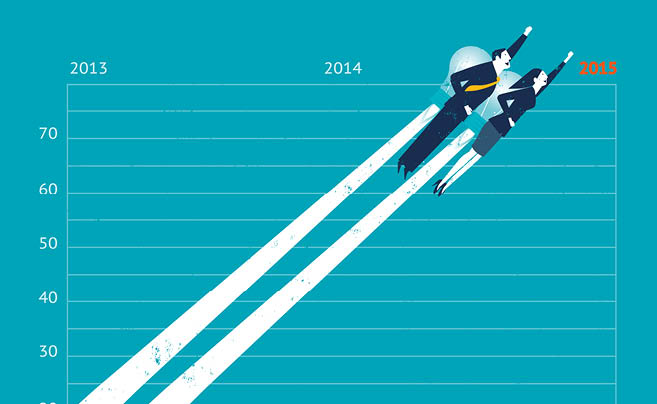At first glance, it may seem that Australia is finally on its way to closing the gender pay gap. Women’s salaries average just under 5% less than men working in comparable roles — a figure that is not statistically significant when it comes to employment data.
This may lead some to assume that we have finally achieved pay parity, but such an assumption is both untrue and unhelpful. When we dig deeper into the data from Hay Group’s recent Australian Salary Movement Index – which analyses more than 257,462 jobs from 410 organisations – we are faced with a more complex picture.
The data reveals that even if every man and woman was paid equally for the same work, the gap would remain. This is because woman are underrepresented in roles that command the biggest pay.
The prevalence of women in ‘small’ jobs, as opposed to the ‘bigger’, more technical or specialised roles dominated by men, is the single biggest factor in gender pay inequity.
When comparing the overall average weekly full-time equivalent earnings – before tax, excluding factors such as overtime and salary sacrificing – of men and women, we are no longer looking at a 5% difference, but an 18.2% one.
The solution
The solution is simple, though not easy. To close the gender pay gap we must increase female participation in male-dominated sectors and make senior roles more accessible to women.
In particular, we need to increase the number of women working in those sectors where science, technology, engineering and mathematics (STEM) skills are highly valued, such as resources, technology and specialised manufacturing.
Currently, men represent 72% of the STEM qualified population in Australia, and there is a downward trend in the number of girls studying maths and science at high school. A reversal of this trend is critical to gender pay balance considering STEM professionals tend to earn more than workers in other areas, even if they hold a ‘lesser’ degree.
The steps
True pay equity will only be achieved when society no longer perpetuates gender stereotypes that discourage women from pursuing education and jobs in certain sectors. However, there are a number of actions leaders can implement to address gender pay issues in their organisations now.
1. Accelerate women into senior roles
- Ensure that there are no biases or structural/cultural constraints to capable women being appointed to key positions. Many organisations would benefit from diversity development and unconscious bias training to increase their awareness of how they may be indirectly reducing female representation in executive and non-traditional roles.
- Ensure roles are advertised and accurately reflect the capabilities needed, and that capable women are encouraged to apply. Candidates often make false assumptions that, if challenged, can increase interest in a role. For example, CIO roles may be more about leadership, influencing stakeholders, systems architecture and program management than they are about detailed hardware skills.
- Ensure onboarding, mentoring and visible support for all leaders, especially women.
2. Increase the pipeline
- Encourage female graduates to spend more time in non-traditional functions – for instance, engineering, supply chain, and technology – as well as more traditional areas like marketing and human resources.
- Encourage job rotation to develop a breadth of experience for high performers, especially women, into non-traditional areas and projects.
- Strengthen STEM participation by girls at school and university to ensure that, as more of our economy moves towards digital and technical capabilities, women grow their participation in this sector.
3. Review your approach
- Review your organisation’s policies and practices to ensure they encourage high performance, same pay for same job and flexible work practices that reward outcomes rather than traditional inputs.
- Conversely, as a society, we could place greater value and therefore reward on the sectors of health and education where female representation is already high. However, this change may take even longer to implement than the challenging steps outlined above.
Business policies alone cannot rectify the gender pay imbalance, therefore CEOs and boards have an enormous part to play in ensuring their organisation is moving the needle in the right direction.







